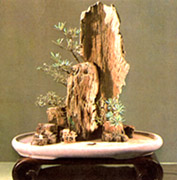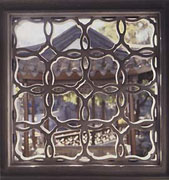
|
|
|
Garden design was an art in China. One of the most common ways to make a Chinese home more elegant was to develop one or more compounds into a garden with plants, rocks, and garden buildings. Gardens were especially appreciated for their great beauty and naturalness. In time, garden design came to be regarded as a refined activity for the well-heeled and well-educated. It may be useful to note that what we are calling a garden in China is somewhat different from its counterpart in western Europe or the United States. It is not an expanse of green with incidental buildings, but rather an area in which buildings surround arrangements of rocks, plants and water; without these buildings, the Chinese garden is not a garden. The architectural elements themselves are decorative and structure how one views the scenery. Good views are many and intimate in scale, in contrast with the sweeping vistas and mathematically ordered plantings of European gardens of the same period. The enclosure of the entire compound by walls or other natural barriers marks this area off as a special precinct for private enjoyment. Gardens were an important part of the homes of the elite long before Ming times, but reached their fullest development in the late Ming in the Jiangnan area, which comprised the southeastern part of China south of the Yangtze River, including the densely-populated cultural centers of Yangzhou, Hangzhou, and Suzhou. These gardens served multiple purposes for their owners. They were extensions and developments of a family's property; they added cultural value by providing a pleasurable environment for private relaxation and entertaining friends and colleagues. In some cases they also contained a productive agricultural portion in the form of orchards or fields for cash crops that could support the needs of a large extended family. But most gardens were luxury items that demonstrated and enhanced the status of their owners. As you look at the images in this section, keep in mind the following questions:
|
|||||||||





